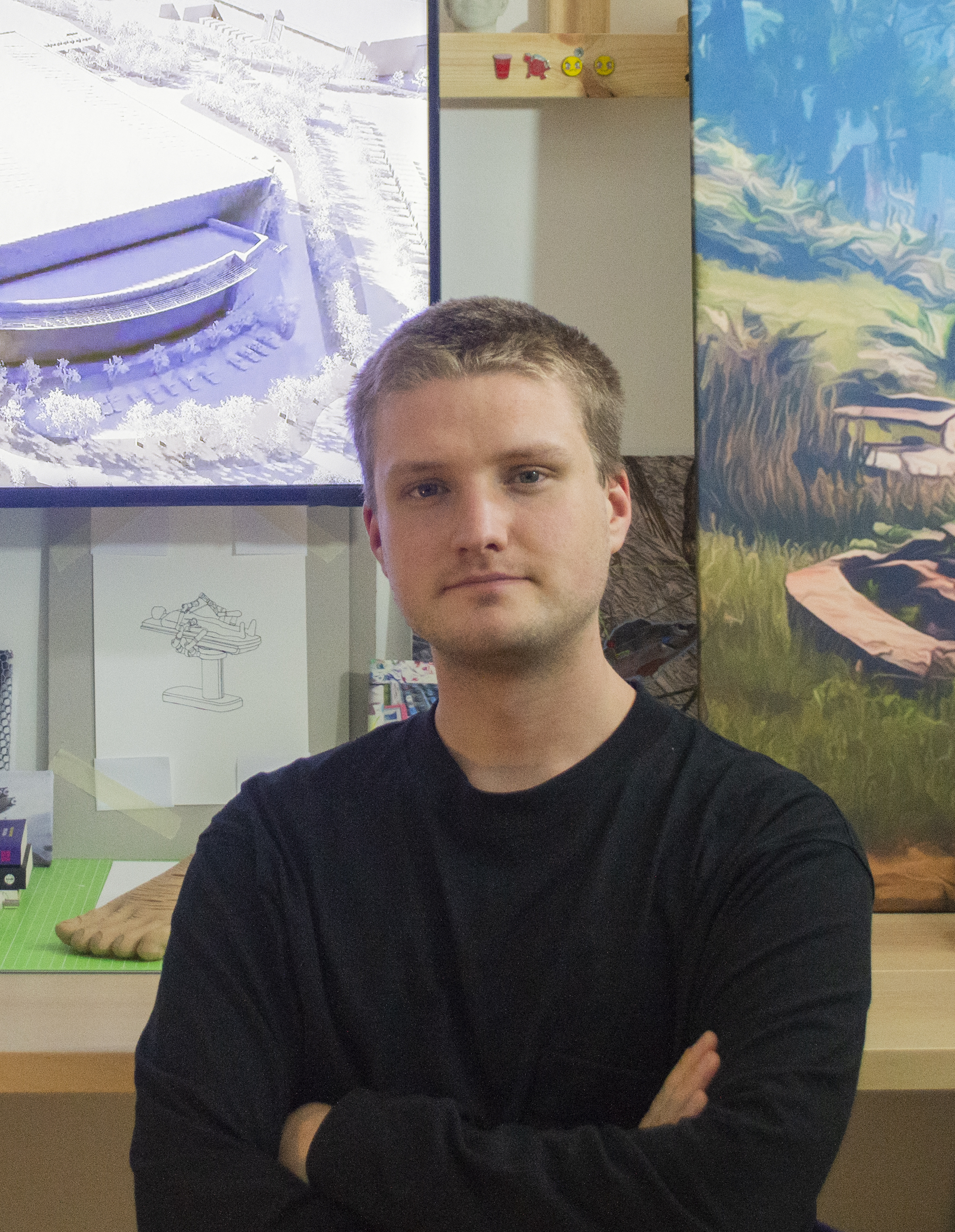BOB BICKNELL-KNIGHT
Generazione Critica: Your work as an artist and curator encompasses a multiplicity of media, and in recent years your focus of inquiry has been very much on the role of technology on today’s society and how it manages to shape people’s desires and needs. Can you tell us in more detail about your artistic practice, which influences you have had and how this has also affected your work as a curator?
Bob Bicknell-Knight: It’s great to speak with you Gemma, and thanks for inviting me to be a part of the Digital Video Wall project! So a lot of my work generally focuses on power structures that proliferate online and in new forms of technology, with a particular interest in the automation of work and hyper consumerism. I mainly work in projects, or research based bodies of work, that fall under those broad ideas and interests.
At the moment I’m producing new work for two upcoming solo shows in 2023 exploring loot boxes in video games, their insertion of gambling mechanics into virtual experiences and the gamification of our lives in general. In 2022 I had a solo show all about NPCs (Non-Player Characters) in video games, exploring the many facets of NPCSs and their looping lives as a metaphor for the boundaries of human action within an increasingly algorithmic, surveilled existence. Before that, in 2021, I had a few different solo exhibitions, one about Boston Dynamics robot dogs from an archeological perspective, questioning whether new machine technologies will result in social stratification. One was all about the 0.0001% of society, imagining what billionaires do in their spare time and another explored the relationship between Amazon and its human employees as the company’s warehouses become increasingly automated.
I’ve laid out these different exhibitions to demonstrate that, although I’m working with lots of separate ideas and conceits, the above themes are present throughout, with my practice changing and developing over the years like a constantly evolving organism. At least, I hope that this is apparent to an observer of my work!
My overall practice is influenced by pretty much everything I interact with on a daily basis, from the media I consume to my own personal experiences, although I think the majority of my work is inspired by how pessimistic and full of constant dread I am about the extreme present and near future, my own personal future and the planet’s, how companies and the rich are extorting others, putting profits over people and destroying the planet in the process. This is why a lot of my work is inherently negative, latching onto and exploring ideas, industries and individuals that are treating people poorly or being purposefully exploitative for monetary gains. Aside from these negative influences, I love playing indie, thought provoking video games with my partner, watching TV and going to art exhibitions that are worth physically visiting.
The curatorial side of my practice feeds my personal work and vice versa, with both sides fluidly informing and inspiring the other. In the past I’ve organised shows and edited books about lots of different subjects, from contemporary modes of surveillance to fake news and video game culture. Speaking and working with artists from my curatorial role will always inform my personal practice to some degree, whether that’s pursuing a new piece of research or a simple aesthetic change. As I grow as an artist, learning more about the industry and working practices, the way I work with artists has also changed. In recent years I have scaled back the curatorial side of my practice, focusing instead on smaller shows and only working with artists through the platform when funding is available, paying artists for their time and work.
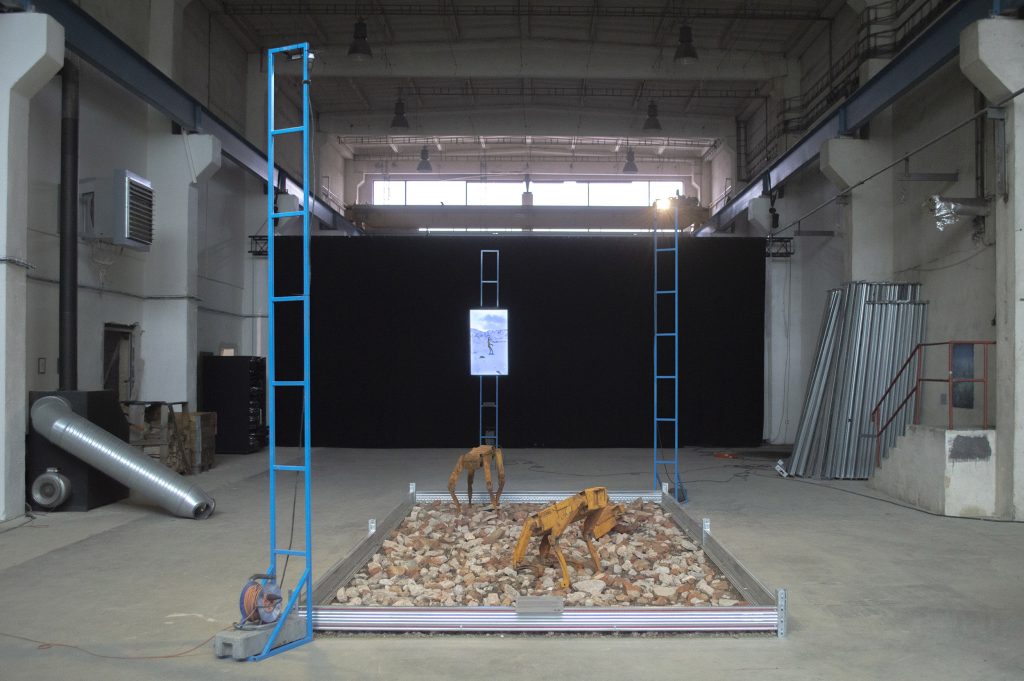
Bob Bicknell-Knight, Digging History, 2021, Installation view at Industra, Brno, Czech Republic
GC: As you put it, Sleep Made Simple consists of a series of seven videos that “function as a succession of advertisements for an unnamed fictitious company that promotes wellness and meditation, foreshadowing the future of capitalism, digital health and surveillance.” The aesthetic is similar to the infographics that are also often found in flyers for corporate offerings, such as those of banks – a few years ago I worked at an asset management company and they were crazy about this kind of look for customers’ advertisements! – and the narrative voice is reminiscent of the automated voice assistant of guided meditation apps. In this visual loop, our body and mental health become commodities, a set of data to be mined to create increasingly customized advertisements. How did the project come about?
BBK: Ah I’m so glad that those references are apparent, as it’s pretty much exactly what I was trying to mimic – I’d be interested to hear more about your time in asset management! The video, originally commissioned by Daata and The Bass Art Museum in 2019, was made under a brief that the work would be natively seen and predominantly presented on Instagram. At the time I was making a lot of work about Facebook and it’s founder, Mark Zuckerberg, and was interested in how social media companies utilise your data to create targeted advertisements and sway elections.
During this time I also regularly used an app on my phone designed to help you sleep that simulated the sound of a forest at night, complete with a crackling fire and the occasional hooting owl. I didn’t pay for this though, so occasionally an advert for another app would play, interrupting this digital forest soundscape. The ads that played were for Headspace, a guided meditation app designed to “help users create life-changing habits that would support their mental health” and enable them to find a “healthier version of themselves”. I was really interested by the ads and how many of them harnessed quite creepy metaphors to speak about mental health whilst harnessing a very soothing, monotone voice. Most of their ads are voiced by Andy Puddicombe, one of the co-founders of the company, and are usually accompanied by a simple yet colourful 2D animation style.
This style of animation, the one you mentioned that the company you worked at was so obsessed by, is a form of flat design, a minimalist design language that became increasingly popular in the mid to late 2010s, particularly for use in adverts and social media infographic posts. People have described it as a design style made for millennials, creating these oversimplified versions of our own reality, perfectly developed for the digitally flattened spaces we inhabit online. This design style has gone even further recently, turning into neomorphism, a type of minimalism characterized by a soft and light look, often using pastel colors with low contrast. The artist Brad Troemel made a great video essay about it in 2021.
So yeah, at the time I think I was pushing all these things around in my head, beginning with the original brief about the work living on Instagram to thinking about data tracking and apps designed to help you sleep. I wanted to use the same tools and techniques that these companies were using to, in some way, subvert the form that I and many others have become accustomed to when scrolling through social media sites.
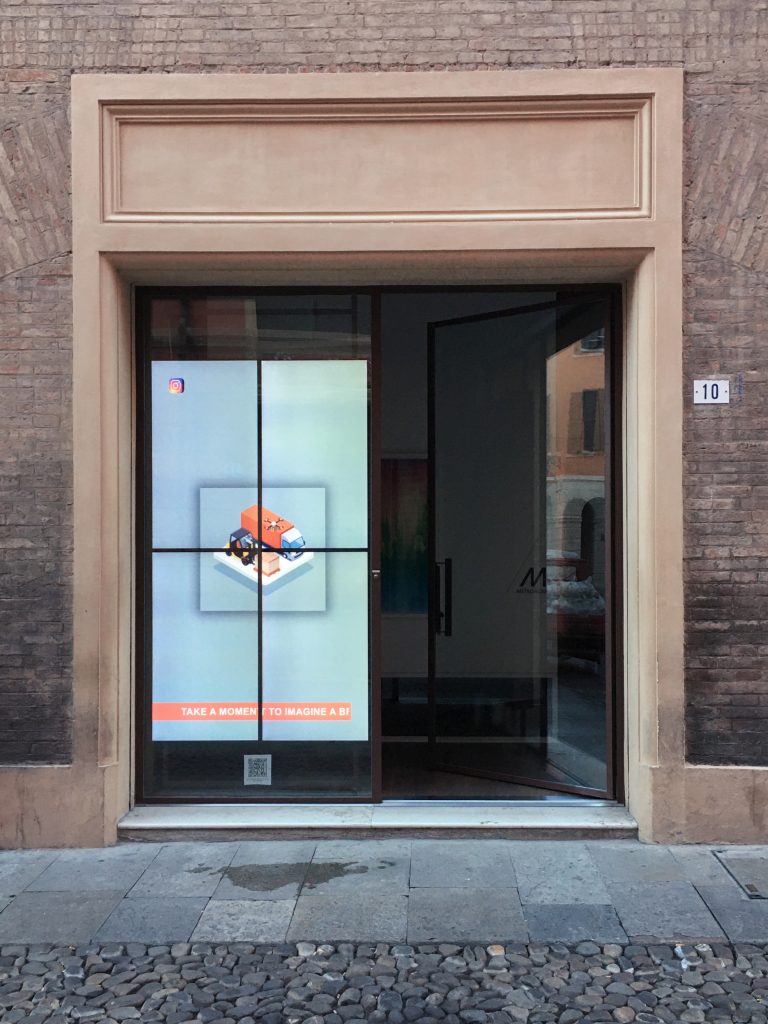
©Bob Bicknell-Knight, Sleep Made Simple, 2023, DVW, Installation View, Metronom, Modena (IT)
GC: Our well-being has become a commodity subsumed by capitalist logic, broken down into a series of tasks and activities that can be tracked to quantify our level of physical and mental health. It is like being in a video game nightmare. Apps dedicated to individual wellness stagger our lives into micro-tasks that, when completed, provide us with temporary relief – congratulations, you’ve reached your 10,000 daily steps! – make us believe that we have things under control and that this micro management system gives us a sense of mental order. It is gamification taken to extremes. Are we unaware of it or perhaps we prefer not to think about how our personal data is used?
BBK: The gamification of our entire lives is very much a goldmine for data traders, as well as being used in far more sinister ways. Last year, following the overturning of Roe Vs Wade in the US and the government making it illegal in many states to have an abortion, lots of people began deleting their period-tracking apps out of fear that the government would be able to access their data and utilise it against them in prosecutions. Our data is already used in countless unknown ways, and as more of our lives are controlled through digital technologies we’ll become increasingly commodifiable and disadvantaged. I’m currently reading Hello World: How to be Human in the Age of the Machine by Hannah Fry, which goes through several examples of how algorithms are directing the course of our lives, whether we like it or not. The book details, in various ways, how algorithms know more about us than our close friends and family members.
I think most people are aware of how our personal data is being used, but it’s becoming increasingly hard to navigate within the world without using devices that track your movements and daily habits, both on and offline. It feels like most people just accept it or, as you say, prefer not to think about it. I really love The Circle and The Every, a two part dystopian series of books by Dave Eggers that have really shaped how I feel about social media sites, and companies in general, since I read the first book in 2013. They’re all about a powerful global company that controls 99% of the market, focused on creating a surveillance state whilst flattening any sense of individuality. There’s a moment in The Every, the second book, where people’s lives have become so automated that they’ll get hundreds of scheduled updates and reminders in a given day, instructing them on seemingly simple things like going to the toilet or walking up a set of stairs. People become quickly accustomed to these updates, losing any autonomy they had over themselves in a bid to up their social credit score, a rating system reminiscent of the one being introduced by the Chinese government.
GC: It is interesting how the video’s narrator lists several modern-day twists and turns of the contemporary world, from fast-paced life to the gig economy to companies saddling us with technological stimuli to the much-desired perfection of our Instagram feed, and how he sympathizes with us poor humans who have to navigate this ocean, and then actually tries to persuade us into trusting these same technologies to keep our minds in check. In addition, the animated infographics reflect particular keywords – for example, at about minute 4, we are talking about the monotonous and repetitive routine, and we see an automa intent on working on a conveyor belt with packages. What is behind the idea of combining infographics and the overlay text typical of live news? Also, the vertical orientation is not very common. Why did you choose this particular format?
BBK: As I was saying before, I wanted to use imagery reminiscent of the Headspace ads, which is where the inspiration for the simple infographics came from, as well as stripped down corporate training videos. For me, the live news feed injects a sense of urgency into the work, as well as a certain type of authority and potential trust that comes from live broadcast news.
With a lot of my work, and my films in particular, I want to lull the viewer into an unearned sense of security, where they kind of trust what they’re being told due to certain visual and auditory cues. In this case I’m using an animation style that many are used to seeing in their social media and television feeds, a style more focused on delivering information that shouldn’t or doesn’t need to be questioned, rather than one that’s open to interpretation. This element of the work is part of another ongoing interest of mine; the lack of questioning of what we see and consume on social media. That’s then combined with the live news feed, again elements from everyday life that we trust to a certain degree. The live news overlay in particular is something you may quickly glance at to get an overall idea of what is being talked about on screen. It’s also very fast paced and doesn’t give you a lot of time to actually reflect on what you’re engaging in. Its pure information to be digested.
The auditory elements of the video, like the soothing music and therapeutic voiceover, are again attempting to lull the viewer. I commissioned a voice actor that usually records voiceovers for yoga and meditation videos to read the text exploring the idea that, if you’re listening to someone who is soft spoken, you’re less likely to question or dig too deeply into what they’re saying. Like I was saying before, the whole piece is an attempt at subverting these elements we see and interact with in everyday life.
I chose to make the video vertical because of how it would fit in with the original brief that I mentioned earlier, and that it felt much more connected to how we interact with these kinds of ads these days; having our doom scrolling interrupted to watch a targeted wellness ad. I did make a different horizontal version for more traditional viewing, although I much prefer displaying the work vertically as it’s inherently linked to the devices we constantly cradle. It felt more appropriate to reflect the work back at the topic it was exploring, as if, once finalised, the work would reside alongside the ads it was originally attempting to reference.
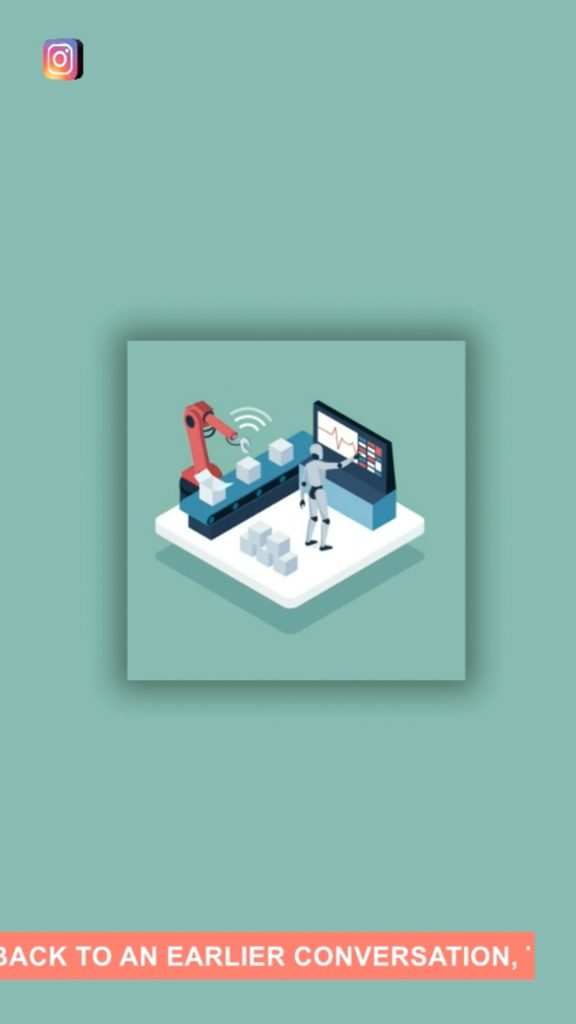
Bob Bicknell-Knight, Sleep Made Simple, 2019, Video Still
GC: More and more digital applications and services are pushing us toward a continuous improvement of our bodies, aesthetically and mentally, in being more organized and productive, while remaining calm and relaxed. However, this also resonates in the content that users post online: for example, on YouTube, there are plenty of videos that teach others how to use bullet journals to be efficient, journaling to get one’s mind in order, visualizing one’s goals, etc.. On one hand, we have transhumanists who wish for a future in which the engineering of the body succeeds in transforming us into super humans; on the other hand, however, we surround ourselves with filters, services, applications, with the hope that they will improve us, guide us. Have we reached a point of no return where Big Tech companies are shaping us and re-coding our desires and needs? What counter-attack mechanisms could we put in place?
BBK: I’m very tempted to say yes, and that everything we see online can and potentially is being controlled, and in doing so is affecting how we move through and see the world. I remember reading an article about how Facebook is constantly conducting experiments on their site to see how best to utilise their audience. For example, making it so that users can only see specific content from their friend group, or only being served ads for right or left leaning products. This then had a major influence on how they felt about their friends or which way they would be voting in upcoming elections.
So yes, I think we are at a point of no return, and, as long as social media sites are making unfathomable amounts of money from their users, they won’t change how they use/abuse us. I really don’t have an answer to how this will or can change either, as I’m as wrapped up in the heavy grasp of social media as the next person. Although I have quite a negative view of the future, with no real answers, two artists whose work I really like who attempt to combat the negative effects of social media and the use of AI are Ben Grosser, who makes work about social media sites and ways to fend off their algorithms, and Joy Buolamwini and her work with the Algorithmic Justice League, a digital advocacy non-profit whose mission is to raise awareness about the impacts of AI.
GC: Your latest works focus extensively on the future of gamified spaces and surveillance mechanisms implemented by tech corporations; you are not only referring to drones but also to the way algorithms shape the content we watch on social media (or think we want to watch). How does this critical approach to such themes come about and how does this kind of inquiry relate to your machinima production and your overall oeuvre?
BBK: As I was saying earlier in response to your first question, a lot of my work is inspired by how pessimistic and full of dread I am about the present and near future, so whenever I’m looking to make new work about a certain subject matter I’m generally looking at it from a place of pessimism. I’m sure there’s positive aspects to a lot of the things I make work about, but a lot of the time when I start researching a subject I’ll discover an element of it that completely taints it. I don’t necessarily go looking for that negative side, but more often than not it’s there, either in a very apparent way or hidden, just below the surface.
I think the majority, if not all, of my work comes under the broad ideas that I mentioned above; power structures, new technologies and hyperconsumerism. My machinima based works, films produced using different video games, explore these same themes. Take, for instance, my 2020 film I Wish I’d Been Born a Balloon, that sees a drone flying through the world of Grand Theft Auto V, reflecting on drones and their history whilst lamenting the fact it’s a machine built to bring destruction, rather than joy. The work is about drones, and how they are increasingly pervasive in everyday life, but uses GTAV as a backdrop, a video game that, when it was launched in 2013, was said to be the most “accurate” simulation of the physical world. The use of machinima within that piece spoke to how the same physical world surveillance via drones is also happening online and in digital spaces.
Of course there’s further layers to using video games, and GTAV, in my work, and the implications that come with them. From how GTAV was/is seen as a “murder simulator”, where players can embark on mass shootings, to how Rockstar Games (the developer that made GTAV) has a “culture of crunch”, overworking their employees for weeks, or even months, during the leadup to the launch of one of their games. I feel like using video games to create my work, and especially GTAV (which I have done a few times) definitely connects to the overarching themes I’m trying to address in my different projects.
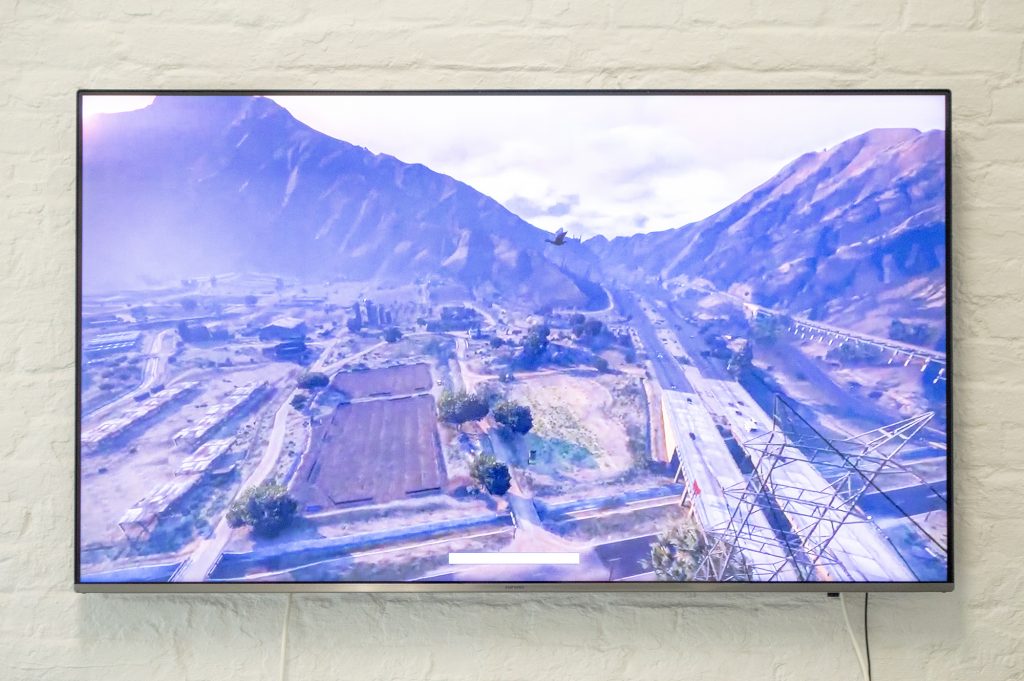
Bob Bicknell Knight, I Wish I’d Been Born a Balloon, 2020
GC: I would like to discuss your role as curator. We met in 2018 via email when I contacted you to understand how isthisit? came about and to learn in detail about the activity of an online gallery like yours. In these 4 years the platform has grown considerably and has become a landmark, especially for young artists and curators who are dedicated to digital art and those like me, for example, who work in the field of game art as well. How did isthisit? progress since then, what aspects have changed? How did you manage the gallery’s activities during the pandemic?
BBK: So I started isthisit? in 2016 as an attempt to understand what curating was. At the time I was quite young and had no real understanding of what a curator was or did. Through the platform I work with artists, curate online and offline exhibitions, publish books and have an online residency programme.
In the beginning I was intent on gaining as much experience as I could, so I worked with hundreds of artists, curated online shows every couple of weeks and said yes to every curatorial opportunity that was offered to me. As time moved forwards I scaled back a little from that early, incredibly hectic, working schedule.
In 2020 I lost my two main jobs due to the pandemic, so finally applied to Arts Council England for funding. Happily that application was successful, and I was able to organise and undertake a six month project on the site, with an overarching theme of Networks, exposing and exploring the underlying architecture of our daily lives, investigating the social, political, digital and hierarchical networks that we reside within. The project involved seventeen artists, writers and collectives, four online shows and an online panel discussion, as well as commissioning writers to interview the exhibited artists and write essays in response to each exhibition, which was then published as a physical book.
Being able to properly pay artists and writers that I worked with through isthisit? during that time, for the first time since starting the site, really changed how I operate. Since that project ended in 2021 I haven’t really done anything directly with the website. I’ve made a conscious decision since then not to work with artists or writers through isthisit? unless there’s funding available, otherwise I feel like I’m exploiting them and their work.
So, for the moment, I’ve paused most of isthisit?’s activity. Since 2021 I have applied for funding several times for projects but have been unsuccessful. I am curating two physical shows this year, in 2023, but those are kind of disconnected to a certain extent from the isthisit? platform. I’ve also been concentrating a lot on my own artwork in recent years, going on residencies and having solo shows, with isthisit? taking a backseat of sorts. It’s a lot easier to underpay yourself for projects rather than having to rely on the kindness of artists. I’d love to have my own physical gallery one day, but for the moment that’s just a small dream of mine.
09/02/2023
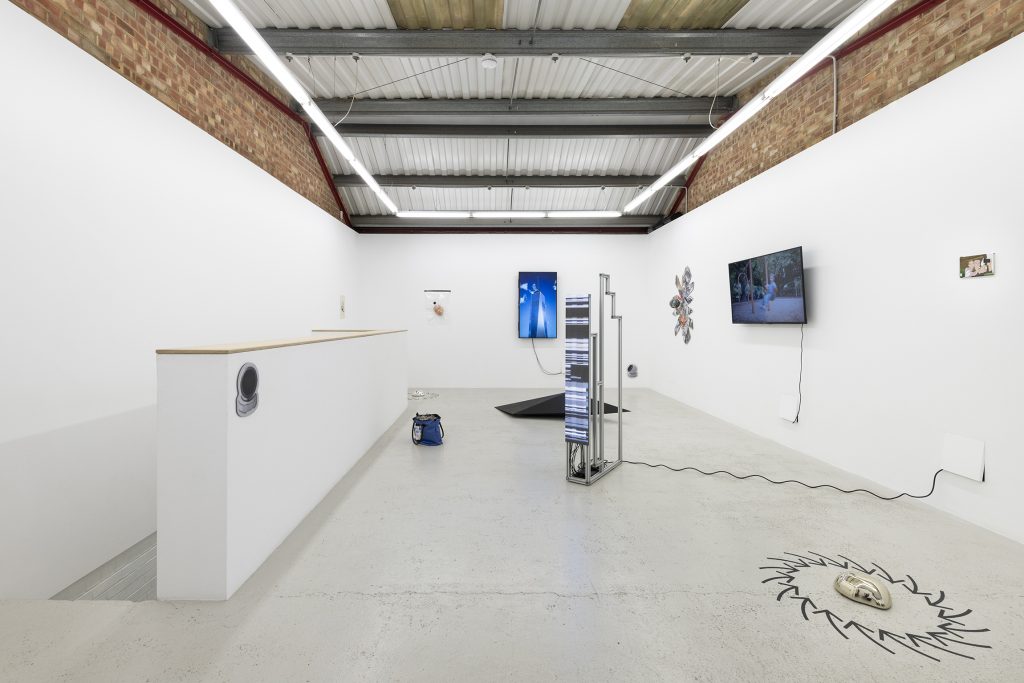
Terms And Conditions May Apply, 2018, Installation view at Annka Kultys Gallery, London, United Kingdom, Curated by Bob Bicknell-Knight w/ Addie Wagenknecht, Alyssa Davis, Bob Bicknell-Knight, Fabio Lattanzi Antinori, James Irwin, Jason Isolini, Jillian Mayer, Lotte Rose Kjær Skau, Marion Balac, Moises Sanabria, Owen Thackeray, Patrick Colhoun, Rosa Nuutinen, Shamus Clisset and Tom Galle

